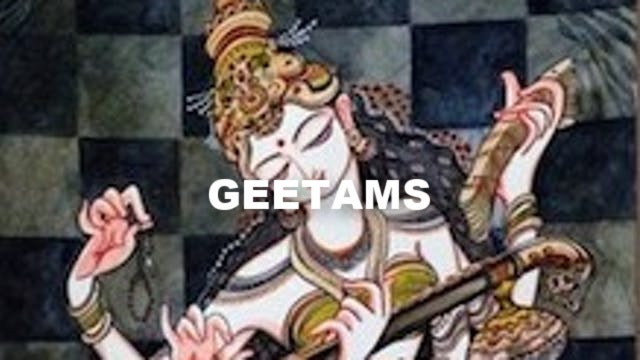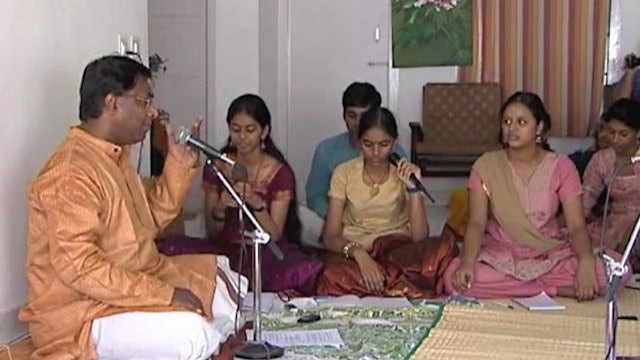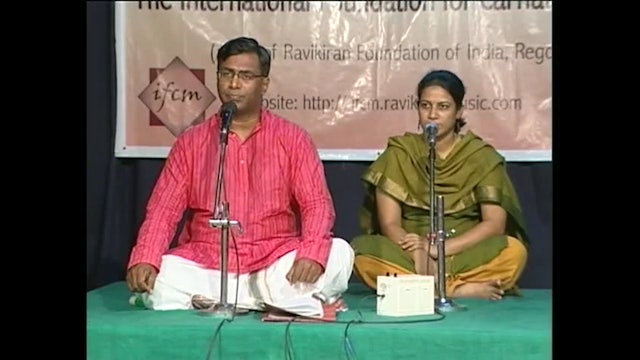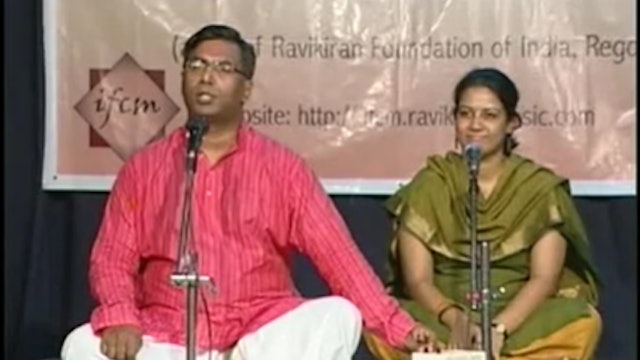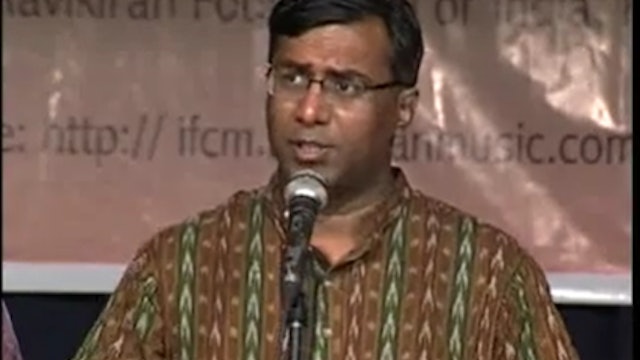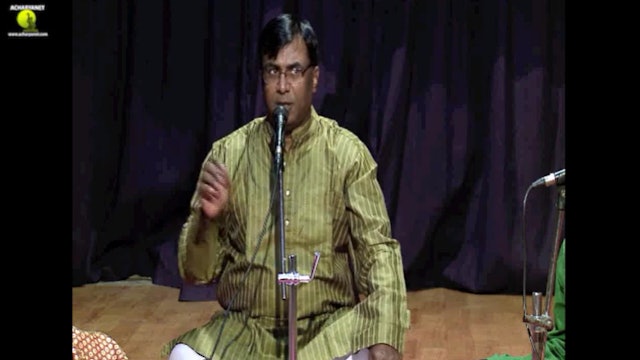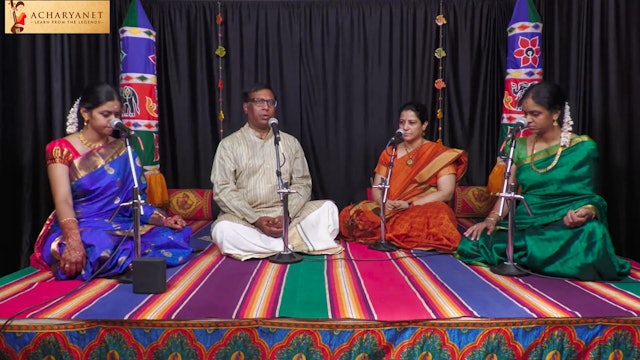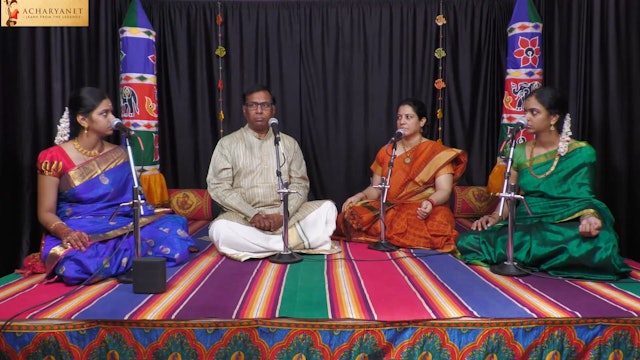Geetams
About Carnatic Geethams
Geethams are the simplest musical form in Carnatic music that introduce students to the synthesis of swara, rhythm and lyrics. This form was first introduced by PurandaraDasa, whose Geethams are popular till date.
How many Geethams are there in Carnatic music?
Broadly speaking, geethams are of two types: –
Samanya Geethams-
Samanya geethams are created using simple lyrical forms and melodies. They do not contain variations or sangathis, and are composed on common talas like Rupakam, Trishratriputa or Adi Tala. Also known as Sadharan geethams, these are generally composed as an adulation towards God, Acharyas or Musical veterans. An example of a Geetham is ŚrīGaṇanātha (Laṃbōdara) which is set in raga Malhari and the lyrics are in Sanksrit. Geethams do not contain any complex lyrical or raga combinations, the flow of music is also quite natural. This natural flow reflects the beauty of the Geetham. Every note of Dhatu has a syllable in the literature.
Lakshana Geethams-
Lakshana geethams are composed to depict the technicality and characteristics of the ragas they are set into. Unlike the Samanya geethams which are adulations towards God or Acharyas, Lakshana geethams are a depiction of the characteristics of the raga itself.
The tradition of imbibing any form of education from the teacher in ancient India was a Kanthasth tradition, that is, it was transferred orally from the Guru to the disciple and there was nomedium of printed texts or scriptures. The disciples were so sharp that they would immediately memorize this knowledge and preserve it for years, again offering it to the next generation orally. At that time, Lakshana geethams were very useful to help students remember the characteristics of the raga they were set into. Music was thus used as a form of imbibing and preserving knowledge. That’s why, the Lakshana geethams are a special class of Geethams in their own right.
Both types of Geethams generally don’t have well defined sections. However, a few have sections similar to Pallavi,Aanupallavi and Charanams. These are referred to as Khandika-s.
Apart from PurnadaraDasa, other composers have also experimented with this form. GurumoorthyShastriwas a prolific music composer of both the forms of Geethams – Samanya and Lakshana. Shyama Shastri has also composed a few simple Geethams; he would often recite these during his daily worship.
Geethams are very simple, but elegant compositions of Carnatic music. Hence, they are ideal for students to master concepts like tunefulness, fidelity to rhythm and breath control; which are key essentials for further development in Carnatic music.
Some well-known Geethams–
ŚrīGaṇanātha (Laṃbōdara) is a Sanskrit Geetham composed in Malhaari raga (Janya of 15th MelaMayamalavagowla) and set in the ChathushrutiJatiRupaka Tala.
Kamala Jaḍala is a Telegu Geethamcomposed in KalyaniRāga 65th MēḷakartaRāga and set in the TisraJatiTriputa Tala
Analekara is composed in ShuddhaSaveri Raga (Janya of 29th MelaSankarabharanam) and set in TisraJatiTriputa Tala.
VaraVīṇāMr̥dupāṇi is a Sanskrit Geetham composed in Mohanam Raga (Janya of 28th MelaHarikambhoji) and set in Rupaka Tala.
-
Geeta rasike – Kalyani – Roopakam - Oottukkadu Venkata Kavi
Learn the Oottukkadu Venkata Kavi krithi in Kalyani raga, roopaka tala, Geeta rasike, taught by Sangeet Samrat Shri Chitravina N Ravikiran.
The notation can be found here -
Iravu pahar – Khamach - Khanda Chapu - Arunagirinathar
Learn the beautiful Arunagirinathar Khamach Tiruppugazh, Iravu pahar, from guru Shri Chitravina N Ravikiran in this video lesson. The notation is provided in the Perfecting Carnatic Music Level 1 e-book.
-
Teerapiniteera - Shahana - Arunagirinathar
Learn the Sahana Tiruppugazh of Arunagirinathar, Teerappini teera taught by guru Shri Chitravina N Ravikiran in this video lesson. The notation is provided in the Perfecting Carnatic Music Level 1 e-book.
-
Bhaktiyal yanunai– Yadukulakambodhi - Chhanda Talam - Geetam - Arunagirinathar
Learn the Yadukulakambhoji Kambhoji Tiruppugazh of Arunagirinathar, Bhaktiyal taught by maestro from Shri Chitravina N Ravikiran. The notation is provided in the Perfecting Carnatic Music Level 1 e-book.
-
Sarasanayana - Varali - Geetam
Learn the exquisite Varali raga geetham, Sarasanayana, a composition of Shri Chitravina N Ravikiran taught by the composer himself. The notation is provided in the Perfecting Carnatic Music Level 1 e-book.
-
Kalaimahale – Hindolam - Roopaka Tala - Chitravina Ravikiran - Geetham
Learn the beautiful Hindolam geetham, Kalaimahale, a composition of Shri Chitravina N Ravikiran taught by the composer himself, set to Roopaka talam. The notation is provided in the Perfecting Carnatic Music Level 1 e-book.
-
Pantuvarali Geetham
Learn the Pantuvarali lakshana geetham, a composition of Shri Chitravina N Ravikiran taught by the composer himself. The notation is provided in the Perfecting Carnatic Music Level 1 e-book.

